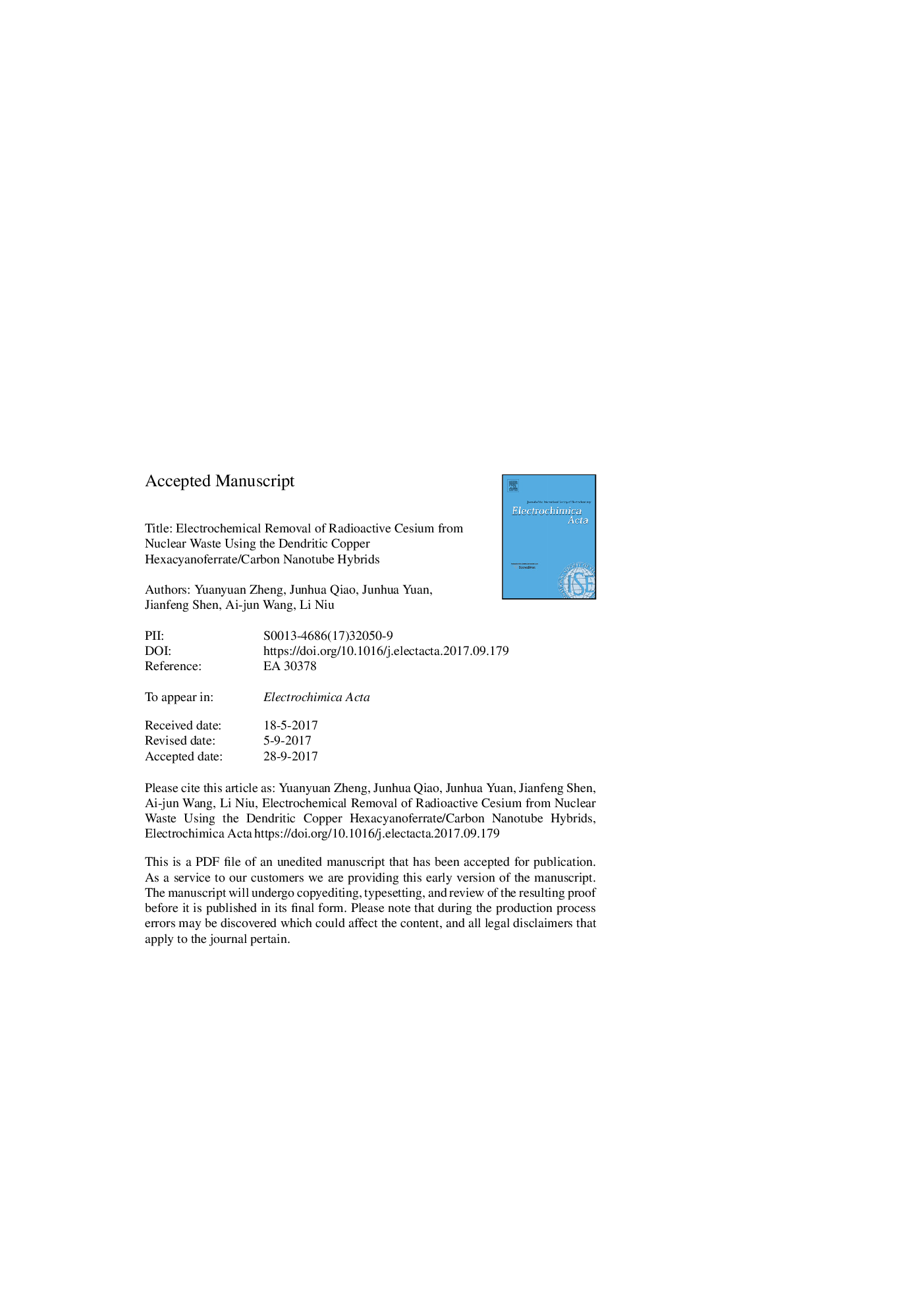| Article ID | Journal | Published Year | Pages | File Type |
|---|---|---|---|---|
| 6605309 | Electrochimica Acta | 2017 | 37 Pages |
Abstract
A novel electrochemical separation system was developed based on copper hexacyanoferrate/multiwalled carbon nanotube (CuHCF/MWCNT) hybrids for selectively removing cesium from wastewater. These CuHCF/MWCNT hybrids were prepared by co-precipitation strategy. The as-prepared CuHCF nanoparticles were uniformly covered on MWCNTs to form a dendritic core-shell structure. This novel structure can improve CuHCFs conductivity, making CuHCFs more accessible for ion exchange. The uptake and release of alkali ion in CuHCF/MWCNT hybrids can be shifted mutually by switching the applied potentials between the anode and cathode. This ion exchange is a fast and reversible process associated with electron transfer in CuHCFs. The potential response depends on the radius of alkali ion. Using this electrochemical adsorption system (EAS), the maximum adsorption capacity (Qmax) of Cs+ ion for CuHCFs/MWCNT hybrids reaches up to 310 mg·gâ1 in 50 μM Cs+ solution with a distribution coefficient Kd of 568 L·gâ1, superior to the Cs+ removal performance by the conventional adsorption system (Qmax 230 mg·gâ1, Kd 389 L·gâ1). Besides, CuHCF/MWCNT hybrids can be regenerated electrochemically. In addition to the advantages in Cs+ removal performance and electrochemical regenerability, they can maintain considerable stability with uptake capacity retention of 85% after 100 cycles of adsorption and regeneration.
Related Topics
Physical Sciences and Engineering
Chemical Engineering
Chemical Engineering (General)
Authors
Yuanyuan Zheng, Junhua Qiao, Junhua Yuan, Jianfeng Shen, Ai-jun Wang, Li Niu,
